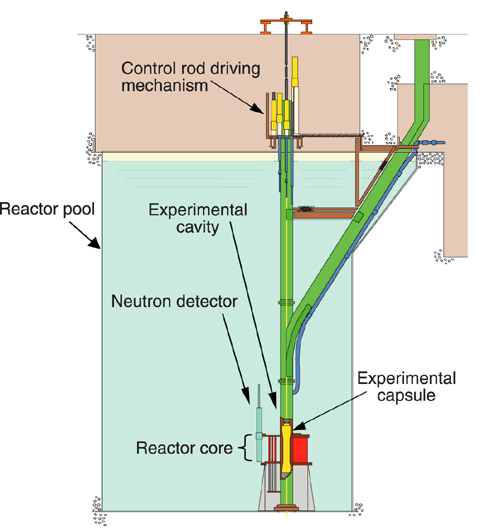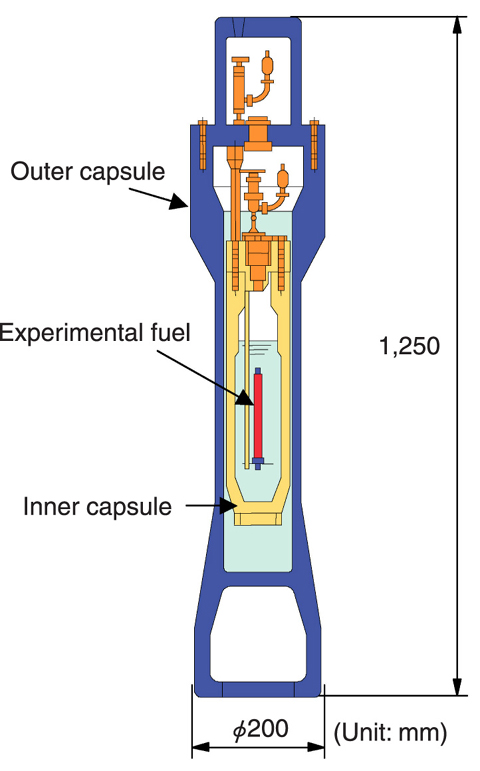
Fig.12-5 Vertical cross section of NSRR

Fig.12-6 Vertical cross section of Type X-IV atmospheric pressure capsule
The Nuclear Safety Research Reactor (NSRR) (Fig.12-5) was built to investigate fuel behavior under Reactivity Initiated Accident (RIA) conditions. The first criticality was achieved in June 1975. NSRR started experiments with fresh fuels of power reactors to investigate fuel behavior, and the results were referred to in setting the regulatory guidelines. Recently, there is a growing concern about the data of irradiated fuels, and tests with high burnup fuels are among the main experiments in the NSRR program.
At NSRR, 18 types of experimental capsules have been developed to simulate various operational conditions. One of them, the type X-IV atmospheric pressure capsule (type X-IV capsule, Fig.12-6) produced in 2006, is used for experiments concerning UO2 fuels irradiated in power reactors.
The type X-IV capsule is used with irradiated fuels, so it has to be completely free of leaks of fission products that are released from damaged fuels. Accordingly, it requires imperviousness equivalent to the pressure vessel of a power reactor. On the other hand, the thickness of the capsule wall must be as thin as possible to get enough neutron flux to the experimental fuels. Therefore, the capsule was designed to be a double container system which is composed of inner and outer capsules. In the inner capsule, the thickness of the capsule wall was reduced as much as possible in the vicinity of experimental fuel and thickened in the upper area where high stress would be applied.
Although the strength of experimental capsules had been evaluated based on the relevant national regulation (Notification No.501), we applied the alternative design standard JSME S NC1-2005 to the type X-IV capsule. The standard was defined by Japan Society of Mechanical Engineers (JSME) and reflects the latest technical knowledge.
Dozens of these type X-IV capsules have been already manufactured and used for many experiments. Results from the experiments have been applied to the fuel design of power reactors and regulatory information. We will keep carrying out these experiments to support research programs for a better understanding of high burnup fuel behavior under RIA conditions.